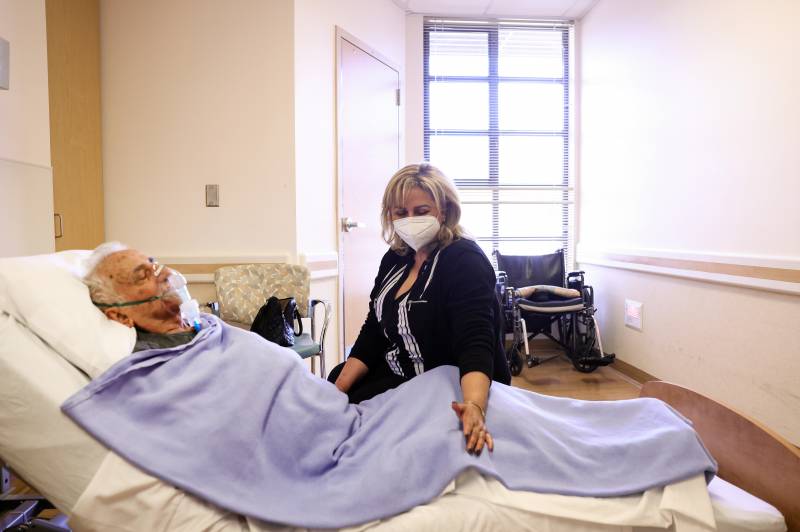It’s been a year of trauma and loss in California’s long-term care homes, where thousands of COVID-related deaths occurred. The scourge of COVID-19 helped spotlight longstanding problems in the skilled nursing industry, and advocates across the political spectrum say nursing homes are now at a crossroads, as state and federal lawmakers put forward legislation to support care workers and reform the way these facilities are run.
Over the last year, reporter Molly Peterson has covered the pandemic in nursing homes, and she spoke recently with KQED Morning Edition host Brian Watt about what the industry is now facing.
The following has been edited for length and clarity.
Remind us how the pandemic played out in nursing homes?
Molly Peterson: When the virus started to spread there weren’t a lot of extra PPE [personal protective equipment] supplies like masks and gowns on hand. Facilities already had a history of at least some infection control violations, existing staffing shortages got worse, and regulators had to waive rules. It was always going to be hard to keep the virus out of nursing homes, but overall, a lot of places were just not ready, despite having a responsibility to be doing all the things that we already knew about controlling an outbreak.
So how are legislators in Washington and Sacramento trying to solve this?
On the federal level, lawmakers are still just dealing with pandemic problems. Some East Coast senators have proposed bills aimed at creating staffing teams and supporting training for people who might potentially work in these homes in California. There’s a bill that would create requirements to prepare for the next disaster or a pandemic. In this state, some lawmakers and advocates say everything was made worse by the bigger problem of how we oversee nursing homes and hold them accountable for taking care of people.

